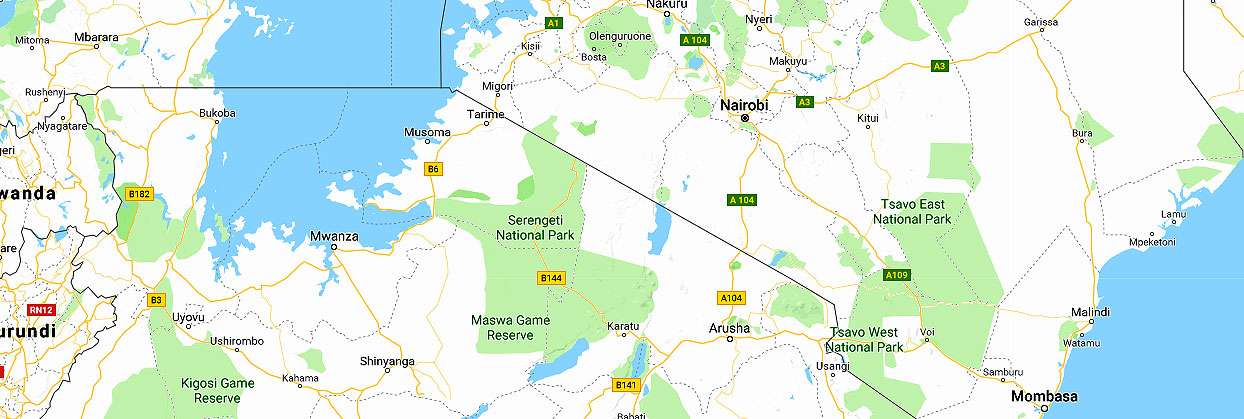Tsavo National Park

Tsavo East National Park
Tsavo East National Park is one of the oldest and largest parks in Kenya at 13,747 square kilometres. Situated in a semi-arid area previously known as the Taru Desert it opened in April 1948, and is located near the town of Voi in the Taita-Taveta County of the former Coast Province. The park is divided into east and west sections by the A109 road and a railway. Named for the Tsavo River, which flows west to east through the national park, it borders the Chyulu Hills National Park, and the Mkomazi Game Reserve in Tanzania.
The park can be accessed by three main gates, from Voi through the Manyani gate, from Mombasa through the Bachuma gate or from Malindi through the Sala gate. There are also several airstrips in the park that allow chartered light planes. Inside the park, the Athi and Tsavo rivers converge to form the Galana River. Most of the park consists of semi-arid grasslands and savanna. It is considered one of the world's biodiversity strongholds, and its popularity is mostly due to the vast amounts of diverse wildlife that can be seen, including the famous 'big five' consisting of lion, black rhino, cape buffalo, elephant and leopard. The park is also home to a great variety of bird life such as the black kite, crowned crane, lovebird and the sacred ibis.
The slightly larger Tsavo East is generally flat, with dry plains across which the Galana River flows. Other features include the Yatta Plateau and Lugard Falls. Tsavo West National Park is more mountainous and wetter than its counterpart, with swamps, Lake Jipe and the Mzima Springs. It is known for birdlife and for its large mammals. It is also home to a black rhino sanctuary.
Tsavo West National Park
Tsavo West National Park is located in the Coast Province of Kenya. The park covers an area of 9,065 square kilometres. The A109 road Nairobi-Mombasa and a railway divides it from the adjoining Tsavo East National Park. Together with adjoining ranches and protected areas, they comprise the Tsavo Conservation Area. Tsavo West is a more popular destination[citation needed] on account of its magnificent scenery, Mzima Springs, rich and varied wildlife, good road system, rhino reserve, rock climbing potential and guided walks along the Tsavo River. The park is operated by Kenya Wildlife Service.
19th-century British and German explorers document people we now refer to as Orma and Waata during their travels through the "nyika," and generally viewed them as hostile toward their interests. Beginning in the late 19th century, the British began to colonise the interior of Kenya and built the Uganda Railway through Tsavo in 1898. The construction of the railway was noted for the killings of a number of construction workers in 1898, during the building of a bridge across the Tsavo River. Hunting mainly at night, a pair of maneless male lions stalked and killed at least 28 Indian and African workers – although some accounts put the number of victims as high as 135. The lions, dubbed "the Maneaters of Tsavo," were eventually shot and killed by the bridge construction supervisor, Lt.-Col. John Henry Patterson. The skins and skulls are now displayed in the Field Museum of Natural History in Chicago. Tsavo remained the homeland for Orma and Maasai pastoralists and Waata hunter-gatherers until 1948, when it was gazetted a national park. At that time, the indigenous populations were relocated to Voi and Mtito Andei as well as other locations within the nearby Taita Hills.
Following Kenyan independence in 1963, hunting was banned in the park and management of Tsavo was turned over to the authority that eventually became the Kenya Wildlife Service. Tsavo currently attracts photo-tourists from all over the world interested in experiencing the vastness of the wilderness and incredible terrain.